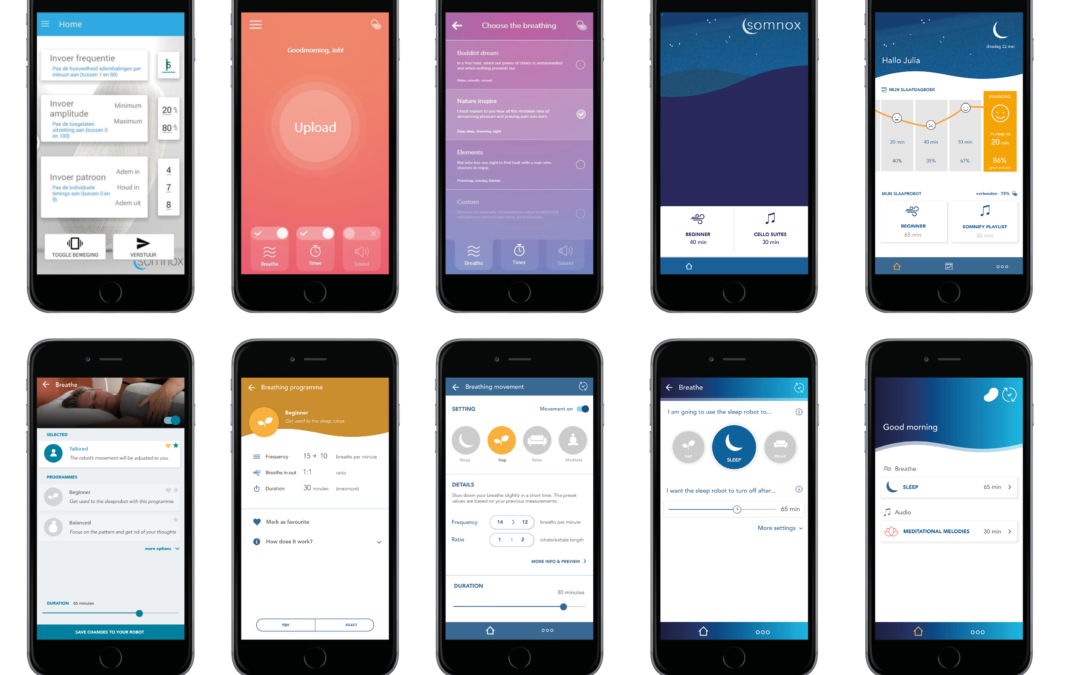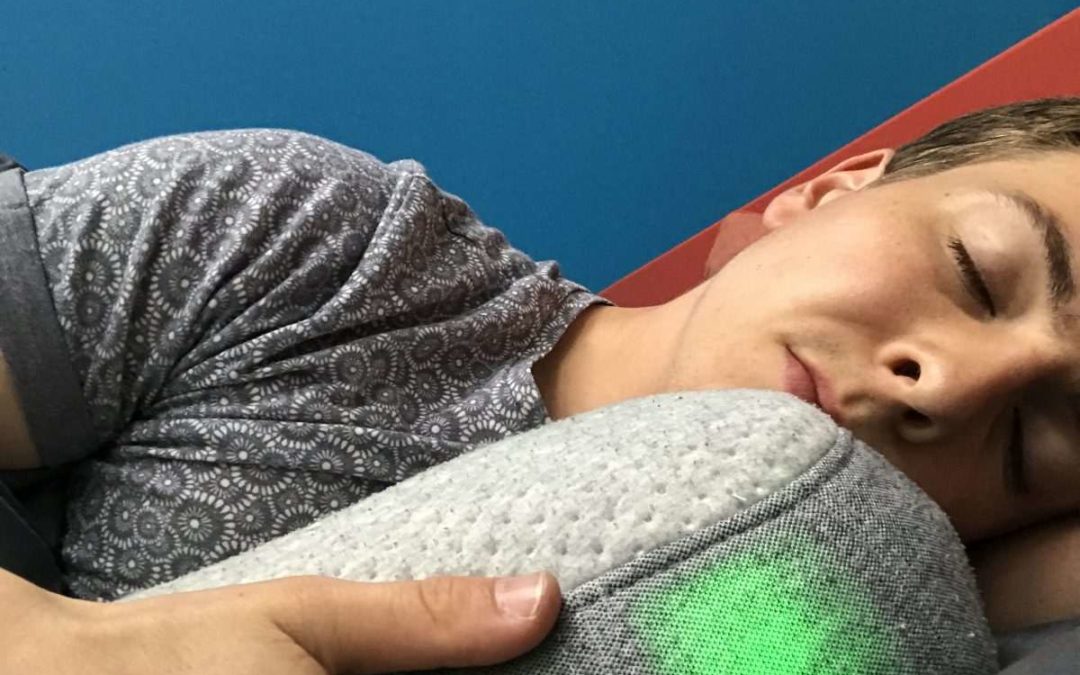
Designing The Companion App Of The Sleep Robot
Similar to development of the Sleep Robot, the design of the app is a process of many iterations. Starting from the basic functionality: setting the breathing movement of the sleep robot and audio settings towards creating a personal tool that helps you understanding the Sleep Robot and improving your sleep habits. In this blog, I want to explain the challenges in our design process.
App Settings
The app will be used to set the different functionalities of the Sleep Robot to the user’s preference: the breathing movement and audio options. A brief introduction to both.
Breathing Settings
Someone’s breathing rate depends on physical and mental state as well habits. Some examples:
- Professional athletes often breathe at a slower pace compared to those who never exercise.
- Those who smoke a lot or consume high amounts of caffeine are more likely to breathe at a higher frequency
- The level of stress is one of the most important variables for breathing rate. You might have experienced a stressful situation in which you noticed your breathing becoming faster or irregular, or even started to hyperventilate.
Thus, since the breathing rate is dependent on many different personal aspects, we want to provide the user with the possibility to adjust this setting. Next to that, there’s the breathing ‘ratio’, which is often described as a certain ‘pattern’ or implemented in a breathing exercise. Normally, you inhale, exhale and have a natural ‘pause’ in before you inhale again. When enlarging the duration of the exhalation, body and mind will relax.

These patterns have been implemented in breathing techniques as well. Do you know the breathing exercise of Dr. Andrew Weil? It’s slightly different with a pause in between the in- and exhale. By focusing on this pattern, people often fall asleep within no time. You might want to try that one tonight.

We are working on integrating different breathing patterns (created by experts and based on literature) as well. Do you think you want to use a validated pattern or create your own? We’d like to hear your preference. This feature will be included in a later update of the app.
Audio Settings
There are tons of music genres and everyone has a different preference. Personally I like jazz, but you might like classical music, the latest pop-hits or easy listening.. Does it make you fall asleep? I like to listen to a bedtime story, while my mother likes to listen to Chopin’s piano pieces.
Since everyone’s preference is so different, we cannot provide standard audio settings along with the breathing settings. Therefore, we will integrate playlists with music and sounds that, based on research, be relaxing and soothing to your ears and mind. We are currently co-developing a set of music samples, natural sounds (such as rain, wind and thunderstorms) and voice samples (such as someone that tells you random words that prevents your mind to think about personal issues, similar to the cognitive shuffling method by Dr. Luc Beaudoin).
Next to that, we want to provide you with the possibility to add your own music to the Sleep Robot’s SD card. Which music makes you fall asleep? Let us know!
Challenges
We have been brainstorming and iterating on how to translate the above story into an understandable app design. We want to design an app that doesn’t overwhelm you, and still provide you with the possibility to adjust everything to your preference.
But do people want to adjust it, or do we have to tailor everything automatically? How do we find a balance between those who want to be guided and provided with standard settings, and those who want to be in control of every detail? Do we have to make different versions of the app (e.g. a basic- and advanced version), or keep it simple in general? And how to provide enough information in the app or via a manual?
All challenges are related to the user experience and interaction with app and robot. We have done many tests and interviews to find out what people want. Some responses:
Breathing
- “I want to practice the breathing techniques during the day as well”
- “I want the robot to adjust to my own breathing rate”
Audio
- “I love to listen to the sound of a storm in the rainforest, a playlist that I have found on Youtube”.
- “It sounds weird, but I actually fall asleep by listening to rock music”
- “Actually, I believe that silence has been proven the best to fall asleep”

Iterations And Testing
We have tried many things in our process of designing the companion app. Different colours, different configurations, different ways to present the settings. We iterate a lot and test the designs in our team and during user tests (do people understand the interfaces, do they like it or get lost?). We have invited future users to come over to Delft, present the new designs to friends and family and have seen the design developing over time.

Final Design Or An Ongoing Process?
Currently, we are working on the software implementation of the final design. The design is based on the Somnox brand identity (soft, comfortable and clear) and the user’s desires on how to set the robot. We will guide the user by asking about the purpose of use (do you want to sleep or have a relaxing moment?) and desired duration of the movement. Not satisfied about the Sleep Robot’s movement? You will always be able to customize the breathing rate. In the future, we aim to add options if the user’s desire is there.
Some (pipeline)-ideas: adjusting the colour theme, adjusting the breathing movement, an integrated sleep diary, breathing exercises.. What (else) would you like to use?
Of course, we have not tested this app with all future users of the Sleep Robot yet. We will keep on asking for feedback to make sure we will update it. I’m curious to your opinion, let us know what you think.

Recent Comments